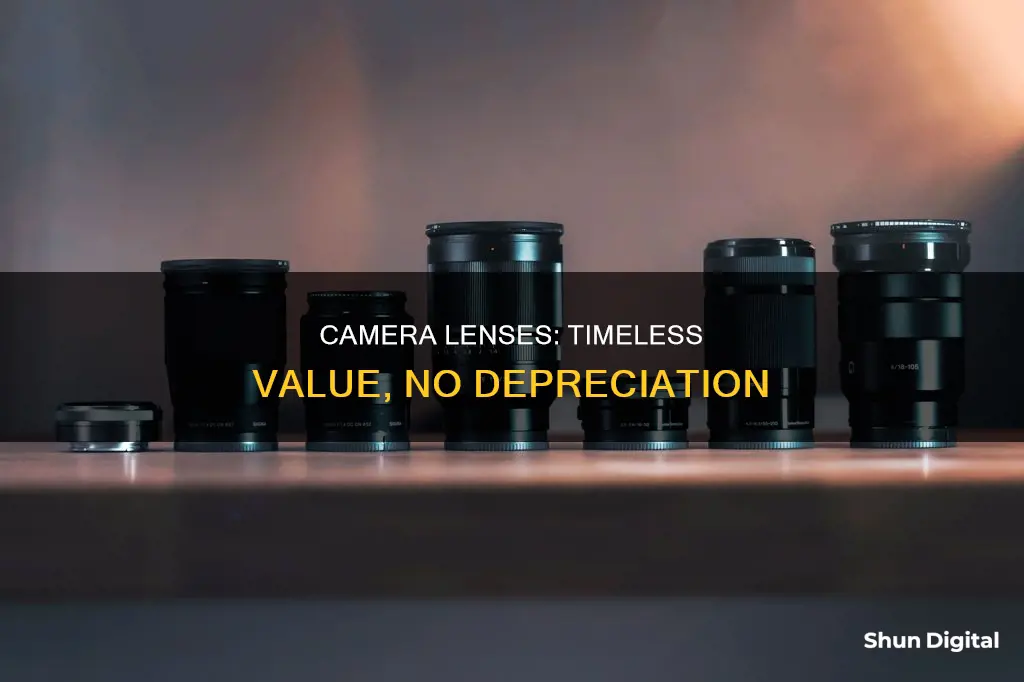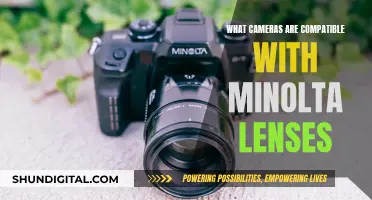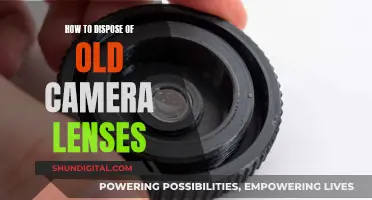
Camera lenses are a curious case when it comes to depreciation. While some lenses do depreciate over time, others hold their value or even appreciate. The rate of depreciation depends on various factors, including the lens brand, age, condition, rarity, and advancements in lens technology.
Lenses from well-known brands like Canon and Nikon tend to depreciate slower than those from third-party manufacturers. Additionally, older lenses that are no longer in production or have been replaced by newer models with significant improvements may see an increase in value over time, especially if they possess unique optical qualities sought after by photographers.
The condition and rarity of a lens also play a role in its depreciation. A well-maintained lens, despite its age, can still offer exceptional image quality and command a higher price. Rarity can also drive up the value of certain lenses, especially if they are sought after by collectors or enthusiasts.
However, advancements in lens technology can cause older lenses to depreciate as newer models with improved features and performance enter the market. Short-term fluctuations in currency exchange rates can also impact lens prices, affecting depreciation rates.
Overall, the depreciation of camera lenses varies, and it is challenging to predict whether a specific lens will appreciate or depreciate over time.
| Characteristics | Values |
|---|---|
| Little wear and tear | Lenses can survive without maintenance for a long time without suffering noticeably from wear and tear |
| High demand | Demand for SLR lenses has gone up due to the proliferation of inexpensive digital SLR bodies that share the same lens mount |
| Image quality | Older lenses can still offer similar image quality to newer ones |
| Advancements in lens design | Advancements in lens design are being made, but at a slower pace than the rate of advancement of image sensors inside digital SLRs |
| Camera depreciation | Camera depreciation rates are higher with low-cost cameras, and more expensive cameras depreciate much slower |
| Brand | Depreciation depends on the brand of the camera |
What You'll Learn

Camera lenses can survive without maintenance for a long time
Lenses have very little degradation with use. For example, a circa-1998 80-200 f/2.8 lens can take sharper images than a brand new 70-200 f/2.8 VR-II lens. In fact, some discontinued lenses appreciate in value over time. However, this is not the case for most lenses, which will depreciate, especially if they are not well-maintained or are outdated.
The depreciation of a camera lens depends on various factors, including the brand, age, condition, and demand for the lens. Canon L lenses, for instance, are known for holding their value well. Additionally, lenses that are well-maintained and have low shutter actuation will have a higher resale value than heavily used lenses.
Overall, while camera lenses can survive without maintenance, proper care and regular use can help to slow down the depreciation process and maintain their value over time.
Blackmagic Cinema Camera: Compatible Lenses for Your Setup
You may want to see also

Lenses are not subject to the same rapid technological advancements as camera bodies
The relatively slower pace of advancement in lens technology means that lenses do not become obsolete as quickly as camera bodies. Improvements in lens design, coatings, and other aspects are typically more gradual and incremental compared to the advancements in camera bodies. This slower rate of change contributes to the longevity of lenses and their ability to retain their value over time.
Additionally, lenses are often built to last and can withstand the test of time if properly cared for. The mechanical components of a lens are designed for durability, and the glass elements are less susceptible to the rapid performance improvements seen in camera sensors and processors. As a result, lenses can maintain their optical quality and performance for extended periods.
It's worth noting that the demand for SLR lenses has increased due to the growing popularity of digital SLR cameras that share the same lens mount. This higher demand has contributed to the slower depreciation of lenses. Furthermore, advancements in lens technology, though continuous, occur at a slower pace compared to camera bodies, which further contributes to the slower depreciation of lenses.
In summary, the combination of durability, compatibility, and slower technological advancements in lens design and functionality contribute to the slower depreciation of lenses compared to camera bodies. Lenses remain relevant and functional for longer periods, making them a worthwhile investment for photographers.
Lens and Camera Compatibility: Finding the Right Match
You may want to see also

Lenses are not updated as frequently as camera bodies
For example, a Canon EOS 7D body bought at a retail value of $725 in 2019 can be sold for $259 after being used for 10 years, losing around $46 in value each year. In contrast, a lens can be used for many years without any noticeable impact on image quality. A lens from 1998 can take sharper images than a brand new lens, and sometimes even sell for a higher price.
Demand for SLR lenses has increased with the proliferation of inexpensive digital SLR bodies that share the same lens mount. Older lenses can still offer similar or better image quality compared to newer ones. Advancements in lens design have been slower than improvements in image sensors inside digital SLRs.
Additionally, lenses from premium brands like Canon tend to hold their value better than third-party lenses. Canon lenses are also more likely to appreciate over time as the brand currently leads the market in high-end cameras.
The Complex Inner Workings of Camera Lenses Explained
You may want to see also

Lenses are not as susceptible to wear and tear as camera bodies
Lenses are also less susceptible to technological obsolescence than camera bodies. Camera manufacturers are constantly improving their products, and new camera bodies with improved features are released frequently. This drives down the value of older camera models. Lenses, on the other hand, do not become obsolete as quickly. A lens that produces sharp images on a camera body released ten years ago will likely still produce sharp images on a camera body released today.
Additionally, advancements in lens technology tend to be more incremental than advancements in camera body technology. While camera bodies with new and improved features are released frequently, lens technology tends to evolve at a slower pace. This means that lenses can remain competitive in the market for longer periods, maintaining their value over time.
It is worth noting that not all lenses are created equal when it comes to depreciation. Higher-end lenses, such as those from premium brands or with unique features, may hold their value better than lower-cost lenses. This is because these lenses are often in higher demand and are not as susceptible to fluctuations in the market.
Furthermore, the depreciation of a lens also depends on how well it is maintained. A lens that is physically abused or stored in harsh environments may degrade faster and lose value more quickly. Proper care and storage can help extend the life and value of a lens.
Understanding Camera Lenses: A Beginner's Guide to Photography
You may want to see also

Demand for lenses is high
Lenses with a unique, coveted quality that is no longer in production by the manufacturer can increase in value over time. For example, the Leica 50mm f1.2 Noctilux lens is highly sought after for its image quality, even though newer lenses may have better specifications. This demand for specific lenses drives up their price.
The proliferation of inexpensive digital SLR bodies that share the same lens mount has also contributed to the high demand for SLR lenses. This increased demand has led to a rise in prices. Additionally, advancements in lens design have been slower compared to improvements in image sensors, so older lenses can still produce similar image quality to newer ones. As a result, lenses may not depreciate as quickly as other technology.
The brand and cost of a camera also play a role in depreciation rates. Canon, for example, is the leading brand in high-end cameras, so their lenses tend to depreciate slower than other brands. On the other hand, low-cost cameras tend to depreciate faster, while more expensive cameras depreciate at a slower rate.
It's important to note that the camera market is constantly evolving, with brands like Sony quickly catching up to Canon in terms of market share. This dynamic nature of the market means that a camera's depreciation rate is never set in stone and can change over time.
Protecting Your Camera: Tips for Lens-less Storage and Travel
You may want to see also
Frequently asked questions
Camera lenses do depreciate, but the rate of depreciation depends on a variety of factors, including the lens's age, brand, and whether it is a prime or zoom lens.
The rate of depreciation for camera lenses can be influenced by a number of factors, including the lens's age, brand, and type. Older lenses may see a slower rate of depreciation if they are still in high demand and offer similar image quality to newer models. Additionally, lenses from premium brands like Canon tend to depreciate at a slower rate compared to less expensive lenses. Prime lenses, or lenses with a fixed focal length, generally hold their value better than zoom lenses.
Camera lenses generally hold their value better than camera bodies, which have shorter production cycles and experience faster technological advancements. However, the depreciation rate can vary depending on the brand and model of the camera body.
To minimise the depreciation of your camera lens, it is important to consider factors beyond just the initial price. Pay attention to the specifications, whether the lens will be used for videography or photography, and whether it will be used frequently. Additionally, proper care and maintenance of the lens can help slow down depreciation by keeping it in good condition.







